One of the worst things about using a Bluetooth speaker on-the-go is running out of battery halfway through your beach party, hike, or camping trip. However, a new prototype portable speaker created by tech companies Exeger and Mayht could make abrupt interruptions to your music a thing of the past.
The two companies are showcasing the Bluetooth speaker at CES 2022 , and while it's not available to the public just yet, it gives us an interesting insight into where the world of audio might be heading in the next few years.
Kitted out with Exeger's Powerfoyle material that can convert any light source into energy (as seen on the headband of the Urbanista Los Angeles headphones), the Bluetooth speaker is essentially self-charging, able to top up its reserves whether you're indoors or out. As most portable speakers max out at around 12 hours of battery life, one that comes with a virtually infinite playtime would be game-changing.
There's a lot of innovation going on inside the speaker, too. The prototype device contains a new kind of dual-membrane driver developed by Mayht, which it claims can match the power of a speaker ten times the size.
Mayht's drivers are flatter and more compact than most on the market, but the company claims that they're no less powerful or sonically adept, using what it calls HeartMotion technology to create an impressive audio performance.
Without being able to hear the prototype for ourselves, we can't say for sure whether the speaker is really capable of these lofty claims - but the combination of a never-ending battery life and drivers that can deliver a bigger bass response than larger, more cumbersome speakers, is really compelling.
Driving the change
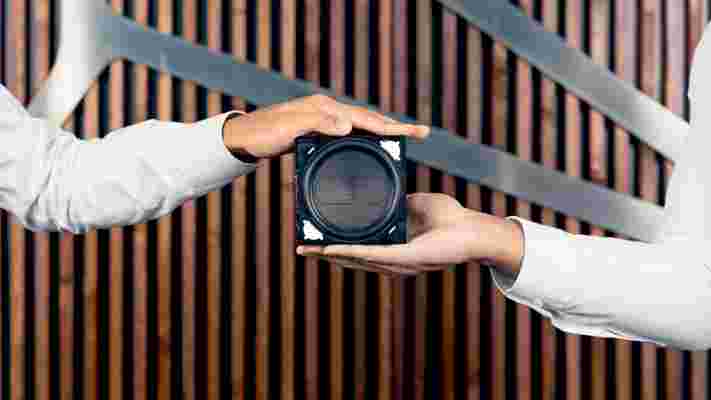
Both technologies could become commonplace very soon. We've already seen how Exeger's Powerfoyle technology lends itself to personal audio devices, and Mayht has high hopes for HeartMotion.
While Mayht created a number of prototype speakers to display at CES (including soundbars and subwoofers), the company's CEO, Matthias Scheek, told us that he believes HeartMotion "will be in every audio device" and that he wants it to be seen as a standard to look out for, much like hi-res audio support or Dolby Atmos .
These new drivers could even make their way into earbuds and headphones , as long as Mayht can make them small enough. "We are doing some early stage research on how small can we actually go, and yeah, it's definitely possible - especially for smartphones. I think it will be interesting, since smartphones normally sound really thin," Scheek explains.
We may not have too long to wait to see HeartMotion in action. Mayht tells us it's in conversation with no less than 45 companies to integrate HeartMotion technology into their products, spanning everything from car manufacturers to audio brands.
Whether the tech does become the new standard remains to be seen - but teaming up with a buzzy technology like Powerfoyle to create a device as accessible as a Bluetooth speaker is a smart move from Mayht, and one that could really shake up the world of audio.
Samsung's S22 is here, but February still has OnePlus, Realme, Moto and more in store
February is a wonderful (or horrible, depending on how you view it) month for smartphone launches, with absolutely loads of unveilings and releases crammed into the year's shortest month.
We've already seen the first of these, as Samsung Unpacked on the 9th brought us three new smartphones (the Galaxy S22 , S22 Plus and S22 Ultra ) and three tablets too (the Galaxy Tab S8, S8 Plus and S8 Ultra ).
After the Samsung launch, some phone fans might be ready to hibernate until the Xiaomi 12 and OnePlus 10 launches sometime in March or April, but there's a lot more coming this month that you might want to pay attention to.
We'll run you through all the big mobiles coming soon, so you can clear spaces in your calendar. Note: these are confirmed launches, not rumored ones, so we could see even more pop up with limited notice.
Realme 9 Pro - February 16
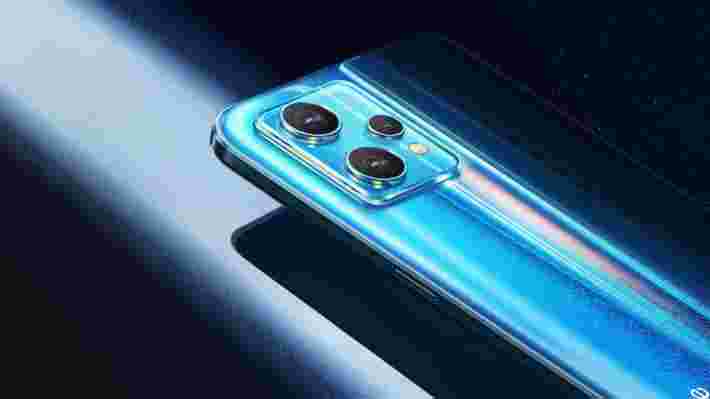
Realme has confirmed that the next members of its budget numbered series are coming on February 16. We're expecting the Realme 9 Pro and Pro Plus, likely without a non-Pro version for now.
Some details of these phones have already been teased, including the 50MP main camera , color-changing rear design and built-in heart rate sensor of the Pro Plus. We don't know as much about the standard Pro just yet.
Since we haven't seen a Pro Plus Realme phone before, we don't exactly know what to expect, especially in the pricing department - so there's lots to find out at the launch event.
OnePlus Nord CE 2 5G - February 17
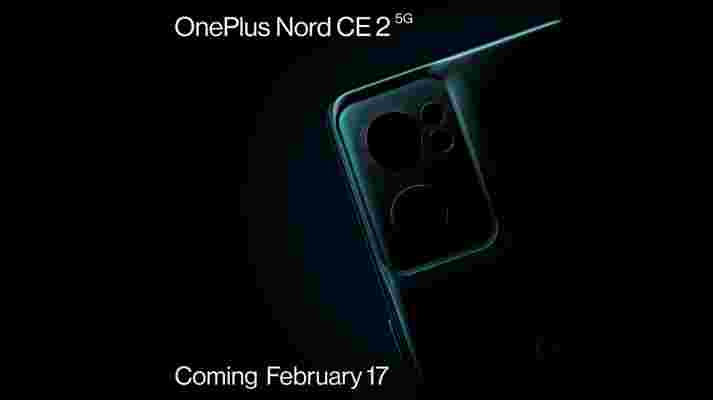
We know the OnePlus Nord CE 2 5G , the successor to the Nord CE 5G from 2021, is coming on February 17. This is expected to be a budget Android mobile that slots into OnePlus' rapidly-growing Nord family.
We know a few details about the phone, including its 65W charging, the fact it has a headphone jack and microSD card slot, and obviously the name tells us that it's compatible with 5G networks.
Leaks have told us quite a lot more, painting the picture of your standard Android mobile that straddles the mid-range and low-end segments, but we'll have to wait until the 17th to know for sure.
Nubia Red Magic 7 - February 17
February 17 is going to be a busy day for smartphones! As well as OnePlus' launch, ZTE's Nubia arm of smartphones is unveiling the Red Magic 7, the newest entry in its line of gaming phones.
Red Magic mobiles are generally mid-range phones that are good for gaming, but we've heard that for the first time a Pro version is coming too, and we don't know what to expect from that one.
The company has confirmed that one or both of the phones will have 165W charging, the Snapdragon 8 Gen 1 chipset, and three rear cameras, and beyond that we're hoping they'll have physical gaming triggers and an efficient cooling system.
The event is only happening in China, but Nubia usually brings its gaming phones to international markets including the US and UK quickly after its launches.
New Motorola Edge phone - February 24

There's a new Motorola Edge phone coming on February 24, the brand has confirmed, but we don't know exactly what - odds are it's the Motorola Edge 30 series.
The above teaser is literally all we know about the launch, which at least confirms the date and the fact it's an Edge smartphone (as per the tiny hashtag at the bottom), so it's speculation alone that makes us think it's the launch of the new generation of Edge device.
If it is the new Edge series, we're expecting three or four new Android mobiles ranging from a budget to a pricey Ultra version, though unlike some of the other brands on this list, Motorola has had its lips tightly shut regarding features and specs.
More so than the Realme, OnePlus or Red Magic launches, there are lots of question marks surrounding this event, so we'll definitely be tuning in to see what gets announced.
Mobile World Congress - beginning February 28
The big phone event is right at the end - annual phone event Mobile World Congress, shortened to MWC 2022 , is taking place from February 28 until March 3.
In previous years, MWC was a hotbed of new phone launches and announcements - we're not too sure what it'll look like in 2022, as Covid caused the 2020 version to be canceled and the 2021 one to be downsized and postponed until the summer.
But several companies have pledged to attend, including Honor, Xiaomi and Huawei, so it definitely won't be a quiet few days.
Come on, foldable phones still have a long way to go
2021 may well go down as the year foldable phones stopped being an expensive proof-of-concept and finally went mainstream.
This was the year when the execution started to match that immense futuristic promise, and where meaningful quality-of-life improvements and lower pricing finally brought them within range of ordinary consumers.
While I count myself among those ‘ordinary consumers’, however, I wouldn’t count myself in with the foldable converts. There are still too many rough edges, annoyances, and open questions surrounding this cutting-edge section of the market.
Galaxy test
I watched the foldable market closely in 2021, both through personal interest (I very much like shiny new gizmos) and a sense of professional duty.
As a freelance tech writer, I’ve had to research and write about the latest foldable phones for countless news items and features. But my current view of foldable phones really only took shape in August, when I received the two most prominent examples of the format for testing.
The Samsung Galaxy Z Fold 3 and the Samsung Galaxy Z Flip 3 arrived together, bundled up in a large glossy black box. They made an instant impression on me and a largely positive one at that.
If there’s an archetypal foldable phone, the Galaxy Z Fold 3 is surely it. Essentially a fold-out 8-inch tablet with the bonus of ‘normal’ phone functionality when closed, it assuredly treads the same foldable design path that the likes of Huawei, Oppo, and Honor have, or will shortly follow.
The Galaxy Z Flip 3 is slightly less familiar – a clamshell device that essentially serves as a regular phone folded in half. It’s decidedly cute, with a sharp style that screams fashion accessory. It also reminds me a little of the Game Boy Advance SP, which is never a bad thing.
Perhaps best of all, the Samsung Galaxy Z Flip 3 finally brought the price of a foldable phone down to below (just about) £1,000. Here was the first such device that you could recommend to a mainstream audience.
Clam take
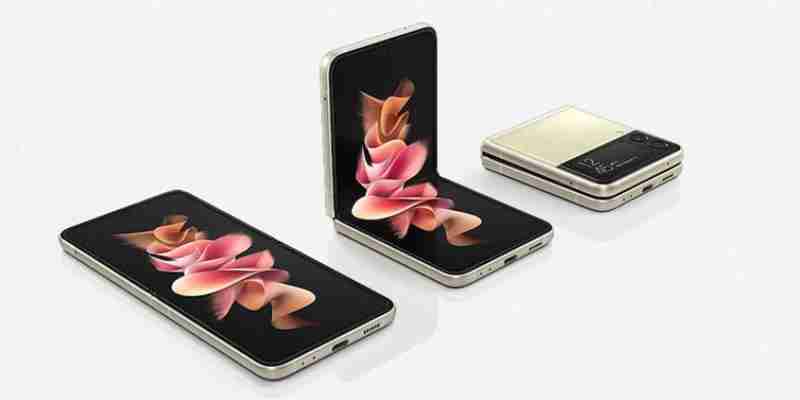
The official TechRadar opinion of both phones has been positive. They’re both great handsets with the Galaxy Fold 3 taking a half-a-star lead as “the best foldable phone so far” and “the first foldable phone that we recommend to people who would normally call themselves early adopters”.
The Galaxy Z Flip 3, for its part, is “the best clamshell foldable you can buy”. I’d agree with each of those statements. But I still wouldn’t buy either phone myself.
In my own extended testing period, I have found that I like using the Flip 3 more than the Fold 3 on a day-to-day basis. The clamshell phone’s more compact form factor simply made it way more pleasant to use as an actual phone. The Galaxy Fold 3 proved to be prohibitively thick and heavy.
The Fold 3 weighs 271g and measures between 14.4mm and 16mm thick when closed. For context, the Xiaomi Mi 11 Ultra – a non-foldable 2021 flagship phone that was universally panned for its unwieldiness – weighs 234g and measures around 12mm when you factor in the mammoth camera module.
While the Flip 3 is more practical than its big brother, I’m still not quite sure what it’s for. Whereas the Fold 3 genuinely justifies its chunky form factor whenever I’m playing Slay the Spire (the Fold being the only phone series that does this wondrous roguelike game justice) or viewing a spreadsheet, I never once found a practical justification for the Flip’s foldable nature.
Sure, it fits nicely in a pocket, but not significantly better than my iPhone 13 Pro. I can imagine there’s a case for those with tiny pockets getting something out of it, or those who carry their phones in tiny handbags. But in my experience, the Flip 3’s form factor is a gimmick.
That’s not even to mention the glaring flaws that put both phones well behind equivalent ‘normal’ phones. While Samsung has improved the ruggedness of both significantly, making these the two toughest and best-engineered foldable phones yet, they still only get an IPX8 rating. This means they’re waterproof but not dustproof.
In addition, both phones have camera systems that are varying shades of underwhelming. While the Galaxy Z Fold 3’s system is the better of the two, it still falls well short of the iPhone 13 Pro that I ultimately ended up putting my money towards.
Admittedly, that’s comparing these phones with the absolute best in the business, but this is a £1,600 smartphone we’re talking about. It takes inferior pictures to both the iPhone 13 and the OnePlus 9 Pro , both of which cost around half that price.
Flip to the future
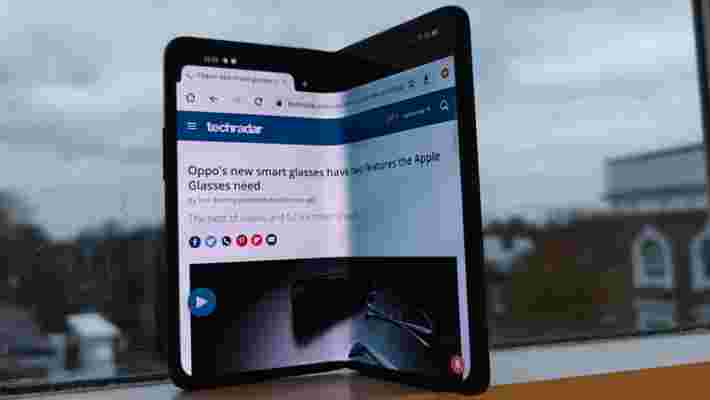
I’m not sure the immediate future of the foldable market is going to solve any of my major issues, either. The Oppo Find N looks like it will get the closest. It has a similar but more compact design to the Galaxy Z Fold 3 and a superior set of cameras that look much closer to the flagship standard.
Meanwhile, the Huawei P50 Pocket looks like a Samsung Galaxy Z Flip 3 doppelgänger. It looks similarly cute and stylish, and just as pointless. It’s not going to make much of an impact outside of China with those US sanctions still in place, either.
Any follow-up to the Motorola Razr 2020 would surely have its hands full matching the very first Samsung Galaxy Z Flip, let alone besting the Samsung Galaxy Z Flip 3.
At the time of writing, it remains to be seen what the Honor Magic V has to offer. Reports suggest another Galaxy Z Fold 3-a-like, which means it’s likely to be another phone that’s great when you’re sat on your couch or a train, and wearisomely impractical everywhere else.
Don’t get me wrong, I’m hopeful that future foldable phones can win me over. However, they need to be more than just a cool proof-of-concept or a bulky fold-out tablet.
The regular, non-bendy smartphone market is now mature, which means your average flagship phone has pretty much nailed all the basics. If I’m to sink good money into a foldable phone it needs to at least match the best in all those areas, and also offer something beyond looking cool. And it needs to do this while being easy to lug around and not significantly more expensive than a premium flagship.
Tell me, smartphone manufacturers: am I asking for too much to hop onboard the foldable bandwagon? If so, I think I might just have to fold for another year. Or rather, not.